Effect of Antimicrobial Peptide from Marine Microorganism on the Storage Quality of Freshly Squeezed Cucumber Juice
-
摘要: 探究不同浓度海洋枯草芽孢杆菌抗菌肽对鲜榨黄瓜汁常温贮藏期内(5 d)品质的影响。采用感官评价、理化分析(pH、稳定系数、总糖含量、菌落总数)及电子鼻技术(主成分分析、雷达图、主要风味成分传感器相应值)综合评价保鲜作用效果。结果表明,抗菌肽浓度与各项理化指标呈正相关,2×MIC浓度抗菌肽作用效果最优,感官评分(7.03)、pH(4.97)、稳定系数(32.86%)、总糖含量(5.11 mg/mL)最高,抑菌效果最佳(0.88 log CFU/mL)。主成分分析(principal component analysis,PCA)表明各抗菌肽处理组黄瓜汁的风味特征相似,对照组与山磷酸钾处理组黄瓜汁的风味特征相似;雷达图揭示各抗菌肽处理组黄瓜汁的风味物质在贮藏后期(第5 d)有所增加,对照组与山梨酸钾处理组黄瓜汁的风味物质在贮藏期内基本不变;主要风味成分传感器响应值分析表明枯草芽孢杆菌BBW1542抗菌肽对鲜榨黄瓜汁中挥发性风味物质产生了一定的影响。综上所述,枯草芽孢杆菌BBW1542抗菌肽的保鲜效果均显著优于化学保鲜剂组(P<0.05)。本研究可为鲜榨黄瓜汁短期贮藏品质保障及海洋微生物源保鲜剂的开发应用提供理论依据。Abstract: To investigate the effects of different concentrations of antimicrobial peptide from marine Bacillus subtilis on the quality changes of freshly squeezed cucumber juice during the storage period (5 d) at room temperature. Sensory evaluation, physicochemical analysis (pH, stability coefficient, total sugar content, total bacteria count), and electronic nose technique (principal component analysis, radar plot, corresponding values of primary flavor components sensors) were used to comprehensively evaluate the effect of freshness preservation. The results showed that the concentration of antimicrobial peptide was positively correlated with various physicochemical indexes. And 2×MIC concentration of antimicrobial peptide had the best effect, with the highest sensory score (7.03), pH (4.97), stability factor (32.86%), total sugar content (5.11 mg/mL), and the best antibacterial effect (0.88 log CFU/mL). Principal component analysis (PCA) showed that the flavor characteristics of cucumber juice in each antimicrobial peptide treatment group were similar, while the flavor characteristics of cucumber juice in the control group and the potassium sorbate treatment group were similar. The radar plot revealed that the flavor components of cucumber juice in each antimicrobial peptide treatment group increased at the later stage of storage (5th d), while the flavor components of cucumber juice in the control and potassium sorbate treatment groups remained unchanged basically during the storage period. The analysis of the response values of the flavor component sensors showed that the antibacterial peptide from Bacillus subtilis BBW1542 had a certain impact on the volatile flavor compounds in freshly squeezed cucumber juice. In conclusion, the preservation effect of antimicrobial peptide from B. subtilis BBW1542 was significantly better than that of the chemical preservative group (P<0.05). This study would provide a theoretical basis for the quality assurance of freshly squeezed cucumber juice in short-term storage and the development of marine microbial freshness preservatives.
-
黄瓜作为具有独特清香味的葫芦科草本植物,2020年世界总产值已达到56900214美元,是世界各地极为重要的商业栽培作物之一[1-2]。研究表明,新鲜黄瓜含水量高达90%以上,富含蛋白质、糖类、酚类、葫芦素等多种营养成分,同时对衰老、氧化、肿瘤等有一定抵抗作用[3]。然而,黄瓜属于典型不耐贮藏蔬菜,常因失水蔫黄或腐烂变质而失去经济价值。为此,将黄瓜加工成果蔬汁可提高其利用率并减少损失,是解决该问题的有效途径。
鲜榨果蔬汁是一类营养、方便、低热量的纯天然饮品,已逐渐趋于大众化[4]。这类饮品以新鲜果蔬为原料,经清洗、切块、榨汁等一系列加工程序完成。通常情况下,病原微生物是否入侵与果蔬清洁力度、生产加工条件等直接相关。有研究表明,鲜切果蔬由于组织结构遭到破坏,其侵染腐败菌和病原菌的数量远高于未处理果蔬[5-6]。目前,以鲜切加工为基础的果蔬汁中微生物污染问题严重。这些微生物包括沙门氏菌(Salmonella)、金黄色葡萄球菌(Staphylococcus aureus)、大肠杆菌(Escherichia coli)等数量多、繁殖快、危害大的食源性病原菌,极易引发相关疾病[7-8]。其中,由沙门氏菌引发的中毒事件在我国食源性疾病中居首位,占比70%~80%,死亡人数高达5.9~15.5万人[9]。因此,减少果蔬汁中微生物污染问题特别是沙门氏菌显得尤为重要。
为延长果蔬及相关产品的货架期,抑制病原菌生长与增殖,人们往往选择添加化学保鲜剂或天然保鲜剂。前者如山梨酸钾、硝酸钾及亚硝酸盐等易对人体产生副作用,严重者甚至会导致荨麻疹、结肠癌等疾病[10-11]。后者主要来源于自然界,其中微生物来源的如乳酸链球菌素(Nisin)、纳他霉素(Natamycin)及ε-聚赖氨酸(ε-PL)等天然抗菌肽,因安全无毒、作用高效等优点在食品领域得到广泛应用[12-13]。王大平等[14]通过浓度为0.1~0.5 g/L的Nisin溶液浸泡猕猴桃果实1 min,发现各浓度均可显著延缓果实贮藏后期可滴定酸、VC含量等指标的下降,对于改善果实衰老具有良好效果。Wen等[15]的研究表明,若在桑葚贮藏期内使用纳他霉素,果实的腐烂率、丙二醛含量及多酚氧化酶活性均降低,而总酸含量、表面颜色、硬度则在一定程度上得到保持。Jiao等[16]以不同浓度ε-聚赖氨酸处理已接种灰霉菌的草莓、葡萄、青椒等果蔬,结果发现ε-聚赖氨酸抑制灰霉菌的效果随其浓度升高而逐渐增强。同时,Oliveira等[17]也曾证明Nisin在桃子、芒果、番石榴等果汁中可维持稳定至少30 d,同时还可显著缓解各果汁维生素C含量的下降。随着微生物源抗菌肽在食品工业中的迅速发展,枯草芽孢杆菌因抗菌活性物质丰富、芽孢耐逆抗热而成为该领域的重要资源[18]。然而,针对枯草芽孢杆菌抗菌肽应用于黄瓜汁的相关研究鲜有报道。鉴于此,本研究采用感官评价、理化分析及电子鼻技术,探究不同浓度海洋源枯草芽孢杆菌抗菌肽对鲜榨黄瓜汁贮藏期的影响,以期为鲜榨黄瓜汁的保鲜与加工提供理论参考。
1. 材料和方法
1.1 材料与仪器
新鲜黄瓜、布丁瓶 广东省湛江市湖光市场;枯草芽孢杆菌(B. subtilis BBW 1542;NCBI登录号:OP 508726) 中国南海北部湾海域湛江港分离所得;乙型副伤寒沙门氏菌(Salmonella Paratyphi β;编号:CICC 10437) 中国工业微生物菌种保藏管理中心;营养肉汤、营养琼脂、酵母浸粉 广东环凯生物科技有限公司;蛋白胨 北京陆桥技术股份有限公司;葡萄糖、蔗糖、硫酸铵、磷酸二氢钾、氯化镁、氯化钾、氯化钙、氯化钠、硫酸镁、硫酸锰、硫酸锌、山梨酸钾 上海麦克林生化科技有限公司;苯酚、硫酸 国药集团化学试剂有限公司。以上试剂均为分析纯。
YXQ-100 A立式压力蒸汽灭菌锅 上海博迅实业有限公司医疗设备厂;BPMJ-150 F生化培养箱 上海一恒科学有限公司;ZWYR-2102恒温培养振荡器 上海智诚分析仪器制造有限公司;KDC-160 HR高速冷冻离心机 安徽中科中佳科学仪器有限公司;Alpha Clean 1300洁净工作台 上海力申科学仪器有限公司;MJ-PB80 Easy 210 B破壁料理机 广东美的生活电器制造有限公司;UV-5800 P紫外可见分光光度计 上海元析仪器有限公司;RE-5800 PC旋转蒸发器 上海亚荣生化仪器厂;HI 2210哈纳台式pH-温度测定仪 北京嘉华众信科技有限公司;Portable Electronic Nose Pen 3电子鼻 德国Aisense科学仪器公司。
1.2 实验方法
1.2.1 抗菌肽的制备
按蛋白胨10 g/L、酵母浸粉5 g/L、氯化镁2.1 g/L、硫酸镁4.2 g/L、氯化钾0.9 g/L、氯化钙1.2 g/L、氯化钠36.5 g/L、pH7.0~7.2,配制种子培养液,121 ℃灭菌20 min,冷却。在无菌条件下,使用1 µL接种环刮取一环枯草芽孢杆菌BBW 1542菌苔接入50 mL/250 mL上述培养液中,170 r/min、30 ℃振荡培养12 h即得种子液。按葡萄糖30 g/L、蔗糖30 g/L、蛋白胨20 g/L、硫酸铵2 g/L、磷酸二氢钾1 g/L、硫酸镁1 g/L、硫酸锰0.01 g/L、硫酸锌0.01 g/L、pH7.0~7.2,配制发酵培养液,121 ℃灭菌20 min,冷却。种子液以2%(v/v)接种量接入40 mL/250 mL的发酵培养液中,170 r/min、30 ℃振荡培养24 h即得发酵液。取1 L发酵液10000 r/min、4 ℃离心10 min,弃除菌体,所得上清液70 r/min、50 ℃恒温旋蒸,直至浓缩物与原上清液体积比为1:6。设定浓缩后体积为初始抑菌浓度100%(浓缩物/无菌水:v/v),采用二倍稀释法连续稀释,测得该抗菌肽对Salmonella paratyphi β的最小抑菌浓度(minimum inhibitory concentration,MIC)为3.125%(v/v)[19]。
1.2.2 鲜榨黄瓜汁的制备
将布丁瓶洗净,121 ℃灭菌,编号备用。挑选大小、成熟度一致、无明显物理损伤和无病害的新鲜黄瓜,洗净去皮、去蒂,切成小块,1 min榨汁处理。参考王潇栋、康苏等[20-21]的方法,黄瓜形成匀浆液后灭菌双层纱布连续过滤2次,除去残渣,65 ℃水浴30 min,立即转至4 ℃冰浴,取上清滤液分装至无菌布丁瓶。每支布丁瓶额外添加0.5 mL相同浓度的乙型副伤寒沙门氏菌悬液(OD600=0.015),并以5种不同方式处理(如表1),每种处理3个平行。单支布丁瓶液体总体积为45 mL,处理结束后封盖,均匀混合,室温25±2 ℃下保藏。贮藏周期为5 d,每隔24 h取样测定。
表 1 鲜榨黄瓜汁的五种不同处理方式Table 1. Five different treatments of freshly squeezed cucumber juice组别 处理方式 终浓度 组一 对照(ck) / 组二 添加抗菌肽 1/2×MIC 组三 添加抗菌肽 1×MIC 组四 添加抗菌肽 2×MIC 组五 添加山梨酸钾 0.05% w/v 1.2.3 感官评价
感官评价是研究食品品质的常用手段,可评定果汁在贮藏期间的品质变化。参考唐晓姝等[22]方法并稍作修改,挑选10位具感官评价经验的人员组成参评小组,针对不同处理组黄瓜汁贮藏第5 d的色泽(3分)、澄清度(3分)、香气(3分)依次打分,满分为9分,收集各项评分结果,统计分析。鲜榨黄瓜汁的感官评分标准详见表2。
表 2 鲜榨黄瓜汁感官评定标准Table 2. Sensory evaluation standards for freshly squeezed cucumber juice项目 评定细则 分值 色泽 明亮的绿色或黄绿色,光泽度好 3 颜色鲜明,光泽暗淡 2 色泽异常,不透光 1 组织状态 澄清,无明显杂质 3 稍澄清,可见浑浊 2 不透明,明显浑浊 1 香气 特有的青瓜清香,令人愉悦 3 单薄的青瓜清香,不刺激 2 辛酸异味,接受程度差 1 1.2.4 稳定系数测定
稳定系数测定参照白凤岐[23]、韩冬屏等[24]方法并稍作修改。稳定系数为离心后浊度与离心前浊度的比值,并与果汁品质成正比,即稳定系数越接近1,果汁体系越稳定[25]。每隔24 h分别从五个处理组吸取4 mL黄瓜汁,稀释两倍,混匀,于650 nm波长处测定吸光值;另从五个处理组分别吸取40 mL黄瓜汁样品,4000 r/min、4 ℃离心5 min,上清液稀释两倍,混匀,于650 nm波长处测定吸光值。每组试验重复三次,按如下公式计算稳定系数。
式中:Sc(Stability coefficient)为稳定系数;Abs650后为离心后样品的吸光度;Abs650前为离心前样品的吸光度。
1.2.5 总糖含量测定
总糖含量测定采用苯酚-硫酸法[26],以葡萄糖为标准品绘制标准曲线,得出葡萄糖的质量浓度(X,mg/mL)与吸光度(Y)的线性关系为:Y=31.19X+0.0151,R2=0.9925。每隔24 h分别从五个处理组取样测定,每组试验重复三次。
1.2.6 pH测定
pH测定参考NY 82.7—1988《果汁测定方法:pH值的测定》[27]进行,测定前使用pH4.0与pH7.0的标准缓冲液将pH计校准[28]。每隔24 h分别从五个处理组取样测定,每组试验重复三次。
1.2.7 菌落总数测定
果蔬汁中菌落总数的多少反映出其被细菌污染的程度。每隔24 h分别从五个处理组吸取0.1 mL样品,经梯度稀释至一定浓度,取100 μL稀释液涂布于LB固体培养基,37±1 ℃静置培养12 h后进行平板计数,每组试验重复两次。
1.2.8 挥发性风味成分测定
挥发性风味成分测定参考Zhu等[29]的方法进行。在第0 d与第5 d分别从五个处理组吸取10 mL黄瓜汁样品于50 mL测量瓶内,使用3层塑料膜密封,室温静置15 min,根据顶空抽样法用电子鼻探头吸取顶端气体,测定五组鲜榨黄瓜汁风味组分。试验参数:采样间隔1 s,冲洗时间60 s,调零时间10 s,预采样时间5 s,检测时间180 s,载气流速250 mL/min,进样流速250 mL/min。检测时传感器于120 s后趋于稳定,选取120~125 s为信号采集时间,环境温度26±1 ℃,每组重复测定5次。PEN 3电子鼻共有10个不同的金属氧化物传感器,各传感器的相应特性见表3。
表 3 PEN 3型传感器阵列及性能描述Table 3. PEN 3 sensor array and performance description传感器序号 性能描述 R1(W1C) 对芳香成分灵敏 R2(W5S) 对氮氧化物十分灵敏 R3(W3C) 对氨类、芳香成分灵敏 R4(W6S) 对氢气有选择性 R5(W5C) 对烷烃、芳香成分灵敏 R6(W1S) 对甲烷灵敏 R7(W1W) 对硫化物(如硫化氢等)灵敏 R8(W2S) 对醇类、醛酮类及部分芳香成分灵敏 R9(W2W) 对芳香成分、硫化物灵敏 R10(W3S) 对脂肪族、烷烃(如甲烷等)灵敏 1.3 数据处理
使用Microsoft Excel采集数据,以平均值±标准差表示结果。通过SPSS 21.0程序软件统计分析,在置信区间(P<0.05)内,根据单因素方差分析及Duncan’s多重比较检验进行显著性分析。组间差异用a/b表示,通过电子鼻中Win Muster软件完成PCA分析,利用Origin 2019 b制图。
2. 结果与分析
2.1 枯草芽孢杆菌BBW1542抗菌肽对鲜榨黄瓜汁的感官评价
五组鲜榨黄瓜汁贮藏第5 d的感官评价得分如表4所示。整体来看,黄瓜汁中添加微生物源抗菌肽或化学保鲜剂的总分均显著高于对照组总分(P<0.05),其中组织状态和香气得分与抗菌肽浓度呈正相关。当抗菌肽浓度为2×MIC时,鲜榨黄瓜汁的组织状态评分最高,为2.70±0.08,同时保持特有的清香风味,两者与其他处理组均存在显著性差异(P<0.05)。就色泽来说,2×MIC浓度抗菌肽的单项得分较低,这可能是添加过高浓度抗菌肽时,其本身颜色对黄瓜汁体系存在一定影响。根据不同处理方式对鲜榨黄瓜汁开展感官评价,得出2×MIC抗菌肽处理组总分最高,但较难以添加抗菌肽对黄瓜汁品质直接判别,仍需从具体理化指标深入论证分析。
表 4 鲜榨黄瓜汁的感官评价结果Table 4. Sensory evaluation results of freshly squeezed cucumber juice项目 不同处理方式 对照组 1/2×MIC 1×MIC 2×MIC 山梨酸钾 色泽 1.97±0.12b 2.37±0.09a 2.37±0.17a 1.63±0.12c 2.33±0.12a 组织状态 1.33±0.12c 1.77±0.12b 2.30±0.16b 2.70±0.08a 2.27±0.17b 香气 1.40±0.08d 1.90±0.08c 2.17±0.12b 2.73±0.09a 2.13±0.12b 总分 4.63±0.24b 6.43±0.21a 6.83±0.40a 7.03±0.12a 6.74±0.21a 注:同行肩标的不同小写字母表示同一感官评价指标在不同处理组间的差异显著性(P<0.05)。 2.2 枯草芽孢杆菌BBW1542抗菌肽对鲜榨黄瓜汁pH的影响
pH变化决定果蔬汁贮藏期内的酸败程度,进而影响本身口感[30]。从图1可知,五组黄瓜汁贮藏期内(0~5 d)的变化趋势基本一致,即pH随着贮藏时间增加而逐渐下降。其中,组一(对照组)的pH值由5.5降至4.0,下降幅度最大,为26.14%。一般情况下,果蔬汁酸败变质由微生物所导致,推测未处理黄瓜汁中存在微生物大量生长繁殖现象,酸性代谢产物不断累积,从而引起贮藏过程中pH持续下降[31]。组二(1/2×MIC)pH在贮藏期第1 d略微降低,最终pH4.15与对照组无明显差异(P>0.05),这表明1/2×MIC浓度抗菌肽对黄瓜汁中微生物的抑制作用相对较弱,货架期延长时间有限。贮藏中后期(3~5 d),组三(1×MIC)、组四(2×MIC)的pH区间与组一、组二逐渐分开,呈现出相对平缓的下降趋势,最终pH分别为4.75、4.97,下降幅度分别为13.16%、9.3%。比对化学保鲜剂处理组(山梨酸钾),整个贮藏期间pH的下降幅度为15.81%,这与抗菌肽浓度为1×MIC的作用效果相似。结果表明,高浓度抗菌肽(≥1×MIC)对黄瓜汁中微生物抑制作用较强,更有利于延缓鲜榨黄瓜汁酸败,其中1×MIC抗菌肽与0.05%(w/v)山梨酸钾具有延缓黄瓜汁酸败的同等效果。根据顾晨涛的研究,在鲜榨黄瓜汁中添加浓度为0.05~0.5%(w/v)的鱼鳞抗菌肽粗提物,其常温贮藏期间pH下降幅度随鱼鳞抗菌肽浓度的升高而降低,此规律与本试验现象相一致[32]。
2.3 枯草芽孢杆菌BBW1542抗菌肽对鲜榨黄瓜汁稳定系数的影响
混浊或体系不稳定现象是导致鲜榨果蔬汁出现质量缺陷的主要原因,它影响着消费者可接受性,同时也是目前饮品规模生产的关键难题[33]。图2结果表明,各组黄瓜汁稳定系数随着贮藏时间增加而逐渐下降。贮藏第1 d,五组黄瓜汁稳定系数在52%~58%内。贮藏第5 d,组一(对照组)稳定系数急剧下降至低水平,仅有10.05%,下降幅度达到80.71%。这可能是由于鲜榨黄瓜汁经微生物污染后,菌体与果汁中果胶、纤维素等其他悬浮颗粒产生碰撞出现聚集下沉现象,果汁稳定体系被破坏,从而造成稳定系数下降[34]。相比之下,组二(1/2×MIC)、组三(1×MIC)、组五(山梨酸钾)的稳定系数在贮藏第5 d分别保留17.09%、21.94%、13.82%,下降幅度依次为69.02%、59.68%、73.35%。根据上述变化可看出,无论添加抗菌肽或山梨酸钾在一定程度上均能维持鲜榨黄瓜汁的悬浮稳定性。当抗菌肽浓度升高至2×MIC时,黄瓜汁在贮藏第5 d的稳定系数仍保持32.86%,下降幅度缩小至44.56%。以上结果表明,与山梨酸钾(0.05% w/v)相比,添加海洋微生物源抗菌肽(1/2~2×MIC)更有利于维持鲜榨黄瓜汁的体系稳定,随着抗菌肽浓度在一定范围内增加,稳定效果也不断增强。
2.4 枯草芽孢杆菌BBW1542抗菌肽对鲜榨黄瓜汁总糖含量的影响
鲜榨黄瓜汁中大量的营养成分有助于微生物生长,其中糖类作为一种必要呈味物质,可同时衡量果蔬汁品质与口感。由图3可知,整个贮藏期内各组鲜榨黄瓜汁的总糖含量随时间延长而逐渐降低。贮藏第5 d,组一(对照组)的总糖浓度由17.40 mg/mL降至0.52 mg/mL,下降幅度为97.01%,这说明微生物滋生导致黄瓜汁中糖类被大量消耗而迅速降低[35]。与对照组相比,添加山梨酸钾或抗菌肽均能在一定程度上缓解此现象。当以山梨酸钾处理,5 d后鲜榨黄瓜汁的总糖含量为2.76 mg/mL,下降幅度81.65%。当以1×MIC抗菌肽浓度处理,黄瓜汁总糖含量最终为3.78 mg/mL,下降幅度78.02%,该含量显著高于(P<0.05)对照组(0.52 mg/mL)与1/2×MIC抗菌肽处理组(2.49 mg/mL),同时下降幅度与山梨酸钾处理的作用效果相似(下降幅度81.65%)。将抗菌肽浓度升高至2×MIC时,总糖含量最终为5.11 mg/mL,下降幅度仅为70.62%,由此发现,升高抗菌肽浓度有利于延缓黄瓜汁总糖含量的下降趋势。通常情况下,果蔬汁中添加抗菌肽是降低其微生物污染风险的有效措施之一。根据何成霞[36]研究,橙汁65 ℃水浴后滴加1 mL大肠杆菌菌悬液,并以天蚕素抗菌肽Cecropin A处理,120 h贮藏期后发现对照组的总糖含量迅速下降至低水平,同时抗菌肽处理组的总糖含量显著高于(P<0.05)对照组,这与本研究结果相一致。以上结果表明,将抗菌肽应用于果蔬汁中可通过抑制病原菌生长与繁殖而降低微生物对糖的利用率,最终缓解果蔬汁的营养损失。
2.5 枯草芽孢杆菌BBW1542抗菌肽对鲜榨黄瓜汁菌落总数的影响
菌落总数作为判定食品被污染程度的标志,可反应果汁的新鲜程度。图4结果表明,各组鲜榨黄瓜汁中菌落总数呈现先上升(前3 d)后下降(后2 d)的波动趋势。贮藏期第1 d,四个处理组的菌落总数低于组一(对照组),其中组三(1×MIC)与组四(2×MIC)并无显著差异(P>0.05),这表明此时两种浓度对黄瓜汁中病原菌的抑制效果相似。第2 d,对照组黄瓜汁中菌落总数达到7.36 lg CFU/mL,2×MIC抗菌肽处理组的菌落总数仅为6.48和0.88 lg CFU/mL的微生物被抑制生长。贮藏至第3 d,对照组黄瓜汁中菌落总数达到最大生长浓度8.46 lg CFU/mL,2×MIC抗菌肽处理组黄瓜汁中菌落总数为7.75和0.71 lg CFU/mL的微生物被抑制生长。对比化学保鲜剂处理组(山梨酸钾),其菌落总数在第2 d与第3 d分别为6.29和7.90 lg CFU/mL,分别产生1.07和0.56 lg CFU/mL的抑制作用,与同时期组四(2×MIC)的抑制效果无显著性差异(P>0.05)。根据已有研究,Liang等[37]在无果肉橘子汁、含果肉橘子汁及经巴氏消毒的橘子汁中各添加0.1μg/mL Nisin,与对照组相比,发现其中微生物菌落总数分别降低0.1、0.1和1.5 log CFU/mL。Nguyen等[38]在经巴氏杀菌的番茄汁中添加4 μg/mL Nisin,发现原有微生物数量降低了0.85 lg CFU/mL。上述研究结果与本试验中抑菌效果相似。综上,添加不同浓度抗菌肽或山梨酸钾皆可降低微生物生长量而延长黄瓜汁的贮藏期,当抗菌肽浓度升高,其抑制作用也逐渐增强,其中浓度为2×MIC的抗菌肽抑制效果最佳。结合图1,各组鲜榨黄瓜汁的初始pH由5.5左右随贮藏时间不断下降,而绝大多数微生物生长的最适pH为5~9。在低pH或底物不足的情况下,细菌生长繁殖及相关代谢活动会受到抑制或失活,这可能是贮藏期后2 d各组黄瓜汁中菌落总数出现下降波动趋势的原因之一[39-40]。
2.6 枯草芽孢杆菌BBW1542抗菌肽对鲜榨黄瓜汁中挥发性风味物质的影响
采用电子鼻技术对五组鲜榨黄瓜汁的挥发性风味进行分析,结果如图5~图7所示。由主成分分析(图5)可知,第1主成分贡献率为98.57%,第2主成分贡献率为0.91%,两者累积贡献率占99.48%,这表明数据覆盖了五组黄瓜汁样品的绝大部分信息,可有效代表黄瓜汁中挥发性风味的主要特征。图5中椭圆形表示各组黄瓜汁贮藏至第5 d时的数据采集点,数据点分散程度越大,组间区分越明显,表明不同处理方式对五组鲜榨黄瓜汁挥发性成分产生了显著影响(P<0.05)。根据数据点在图中的分布距离分析,五组黄瓜汁样品差异主要在PC1方向,其中对照组与山梨酸钾处理组距离相近,贡献率低,说明两者风味特征较相似;2×MIC、1×MIC、1/2×MIC抗菌肽处理组采集点分布以高浓度从左依次往右,贡献率均大于40%,推测三者存在规律性的风味特征。
图6(a)为五组鲜榨黄瓜汁第0 d风味化合物的电子鼻雷达图,各组黄瓜汁的风味轮廓相似,特征气味高度重合,信号传感器中最敏感组分是R7(硫化物)与R2(氮氧化物),推测贮藏前期黄瓜汁的主要风味物质为硫化物和氨氧化物。图6(b)为五组鲜榨黄瓜汁第5 d风味化合物的电子鼻雷达图,相比贮藏前期,对照组与山梨酸钾处理组的风味物质基本不变,抗菌肽处理组的风味物质更为丰富。具体表现为,芳香成分(R1)、氮氧化物(R2)、氢气(R4)、甲烷(R6)、硫化物(R7)、醇类、醛酮类及部分芳香成分(R8)6个传感器的响应值产生明显变化,其中R1和R8属于对风味影响较好的芳香化合物,R7则可能对风味产生负面影响[41]。
香气成分的保留与果蔬汁新鲜度密切相关,不良的风味物质则导致其品质下降[42]。为明确抗菌肽浓度对鲜榨黄瓜汁风味保真的影响,针对各组的主要风味成分与相对响应值进一步比较。如图7,贮藏后期各组传感器累积响应值从大到小依次为:组二(1/2×MIC)>组三(1×MIC)>组四(2×MIC)>组一(对照组)>组五(山梨酸钾)。根据已有研究,黄瓜汁经贮藏5 d后产生明显变化的挥发性成分为酯类、萜类、醇类及硫化物,氢气和甲烷很少检出[43]。对应本试验中传感器R4(对氢气有选择性)与R6(对甲烷灵敏),发现两者的变化主要出现在抗菌肽处理组,推测可能是抗菌肽浓缩物本身存在的气味,因此对其他4类相对响应值深入分析。就R1(芳香成分)与R8(醇类、醛酮类及部分芳香成分)响应值而言,贮藏至第5 d,1/2×MIC抗菌肽处理组的响应值分别为7.33、25.82,是贮藏第0 d的3.23、5.75倍;1×MIC组的为6.44、19.79,是贮藏第0 d的2.41、2.93倍。同样第5 d,2×MIC抗菌肽处理组的响应值为4.92、9.55,对照组的为3.45、8.96,而山梨酸钾组仅有2.52、4.97,三组相对响应值较贮藏第0 d均只增加1倍左右。研究表明,众多源于黄瓜的风味物质只起辅助或调和作用,仅有反,顺-2, 6-壬二烯醛与反,顺-2, 6-壬二烯醇具有黄瓜香气[44]。其中,反,顺-2, 6-壬二烯醛是公认的特征香气物质,可对黄瓜清香风味形成有重要作用[45]。结合电子鼻性能描述(表3),推断传感器R8(醇类、醛酮类及部分芳香成分)对应风味成分与这类香气物质密切相关。同时,R1对应化合物可对风味产生积极影响[41]。综合比较各组的R1、R8相对响应值,发现1/2×MIC浓度抗菌肽的相对响应值较贮藏前期增加倍数最高,说明该浓度对黄瓜汁的香气醇厚最有利,其次是1×MIC抗菌肽、2×MIC抗菌肽,而山梨酸钾则对该作用甚微。
就R2(氮氧化物)与R7(硫化物)的相对响应值而言,贮藏至第5 d,1/2×MIC抗菌肽处理组的分别为36.28、56.16,是贮藏第0 d的6倍、1.8倍;1×MIC组的分别为26.87、38.46,是贮藏第0 d的3.02倍、0.86倍。相比之下,第5 d时2×MIC组的为23.96、38.56,对照组的为6.23、18.9,而山梨酸钾组的仅有4.24、10.52,这三组的R7响应值均低于贮藏第0 d。已有报道,与传感器R7 相关的风味物质对食物存在负面影响[41]。综合以上结果可知,枯草芽孢杆菌BBW1542抗菌肽对鲜榨黄瓜汁中挥发性风味物质产生了一定的影响,既会产生对黄瓜汁风味有利的芳香成分如反,顺-2, 6-壬二烯醛等,同时也会产生一定的氮氧化物、硫化物等不利于黄瓜汁风味的成分。
3. 结论
本研究表明,在鲜榨黄瓜汁常温贮藏过程中添加海洋微生物源抗菌肽可有效改善黄瓜汁酸败、体系不稳定、营养物质流失等问题。与对照组相比,抗菌肽处理组可有效延缓鲜榨黄瓜汁pH、稳定系数、总糖含量的下降,并可有效抑制微生物的生长,其中2×MIC浓度抗菌肽的作用效果最为显著。同时,抗菌肽对鲜榨黄瓜汁中挥发性风味物质产生了一定的影响,既会产生对黄瓜汁风味有利的芳香成分如反,顺-2,6-壬二烯醛等,同时也会产生一定的氮氧化物、硫化物等不利于黄瓜汁风味的成分。综合比较不同浓度海洋微生物源抗菌肽与化学保鲜剂(0.05% w/v山梨酸钾),发现该类抗菌肽的作用效果优于山梨酸钾,尤其在风味保真方面更佳。由此可见,枯草芽孢杆菌BBW1542抗菌肽具有良好的应用前景,有望替代传统化学保鲜剂为果蔬汁短期贮藏品质提供保障,同时为天然保鲜剂开发应用与活性肽挖掘鉴定提供理论依据与价值参考。然而,目前该抗菌肽所产活性物质的种类结构及其相关抑菌机理尚不清晰,有待进一步深入研究。
-
表 1 鲜榨黄瓜汁的五种不同处理方式
Table 1 Five different treatments of freshly squeezed cucumber juice
组别 处理方式 终浓度 组一 对照(ck) / 组二 添加抗菌肽 1/2×MIC 组三 添加抗菌肽 1×MIC 组四 添加抗菌肽 2×MIC 组五 添加山梨酸钾 0.05% w/v 表 2 鲜榨黄瓜汁感官评定标准
Table 2 Sensory evaluation standards for freshly squeezed cucumber juice
项目 评定细则 分值 色泽 明亮的绿色或黄绿色,光泽度好 3 颜色鲜明,光泽暗淡 2 色泽异常,不透光 1 组织状态 澄清,无明显杂质 3 稍澄清,可见浑浊 2 不透明,明显浑浊 1 香气 特有的青瓜清香,令人愉悦 3 单薄的青瓜清香,不刺激 2 辛酸异味,接受程度差 1 表 3 PEN 3型传感器阵列及性能描述
Table 3 PEN 3 sensor array and performance description
传感器序号 性能描述 R1(W1C) 对芳香成分灵敏 R2(W5S) 对氮氧化物十分灵敏 R3(W3C) 对氨类、芳香成分灵敏 R4(W6S) 对氢气有选择性 R5(W5C) 对烷烃、芳香成分灵敏 R6(W1S) 对甲烷灵敏 R7(W1W) 对硫化物(如硫化氢等)灵敏 R8(W2S) 对醇类、醛酮类及部分芳香成分灵敏 R9(W2W) 对芳香成分、硫化物灵敏 R10(W3S) 对脂肪族、烷烃(如甲烷等)灵敏 表 4 鲜榨黄瓜汁的感官评价结果
Table 4 Sensory evaluation results of freshly squeezed cucumber juice
项目 不同处理方式 对照组 1/2×MIC 1×MIC 2×MIC 山梨酸钾 色泽 1.97±0.12b 2.37±0.09a 2.37±0.17a 1.63±0.12c 2.33±0.12a 组织状态 1.33±0.12c 1.77±0.12b 2.30±0.16b 2.70±0.08a 2.27±0.17b 香气 1.40±0.08d 1.90±0.08c 2.17±0.12b 2.73±0.09a 2.13±0.12b 总分 4.63±0.24b 6.43±0.21a 6.83±0.40a 7.03±0.12a 6.74±0.21a 注:同行肩标的不同小写字母表示同一感官评价指标在不同处理组间的差异显著性(P<0.05)。 -
[1] FAOSTAT. 2020. http://www.fao.org/faostat/zh/#data. Accessed on [2023-03-05].
[2] GHAFOOR K, AL-JUHAIMIF Y, MOHAMED AHMED I A, et al. Effects of functional coatings containing chitosan, orange peel and olive cake extracts on the quality attributes of cucumber during cold storage[J]. Plants,2022,11(14):1895. doi: 10.3390/plants11141895
[3] 石亚中, 伍亚华, 许晖, 等. 怀远石榴皮提取液对黄瓜保鲜效果的影响[J]. 食品工业科技,2013,34(3):335−338. [SHI Y Z, WU Y H, XU H, et al. Fresh-keeping effect of Huaiyuan pomegranate peel extract on cucumbers[J]. Science and Technology of Food Industry,2013,34(3):335−338. SHI Y Z, WU Y H, XU H, et al. Fresh-keeping effect of Huaiyuan pomegranate peel extract on cucumbers [J]. Science and Technology of Food Industry, 2013, 34 (3): 335-338.
[4] 胡顺爽, 郜海燕, 吴伟杰, 等. 响应面法优化草莓鲜榨汁紫外杀菌工艺[J]. 食品科学,2018,39(22):227−234. [HU S S, HAO H Y, WU W J, et al. Optimization of UV sterilization process of strawberry fresh juice by response surface methodology[J]. Food Science,2018,39(22):227−234. HU S S, HAO H Y, WU W J, et al. Optimization of UV sterilization process of strawberry fresh juice by response surface methodology [J]. Food Science, 2018, 39 (22): 227-234.
[5] DIKE O U, DAVID J G, LEE C, et al. Appearance and overall acceptability of fresh-cut cantaloupe pieces from whole melon treated with wet steam process[J]. LWT-Food Science and Technology,2017,82:235−242. doi: 10.1016/j.lwt.2017.04.033
[6] VANDAMM J P, LI D, HARRIS L J, et al. Fate of Escherichia coli O157: H7, Listeria monocytogenes, and Salmonella on fresh-cut celery[J]. Food Microbiology,2013,34(1):151−157. doi: 10.1016/j.fm.2012.11.016
[7] 马金晶, 李凤琴, 黄敏毅, 等. 鲜切果蔬中食源性致病菌污染研究进展[J]. 食品安全质量检测学报,2021,12(7):2591−2599. [MA J J, LI F Q, HUANG M Y, et al. Research progress of food-borne pathogens contamination in fresh-cut fruits and vegetables[J]. Journal of Food Safety and Quality,2021,12(7):2591−2599. MA J J, LI F Q, HUANG M Y, et al. Research progress of food-borne pathogens contamination in fresh-cut fruits and vegetables [J]. Journal of Food Safety and Quality, 2021, 12(7): 2591-2599.
[8] 徐重新, 张存政, 刘媛, 等. 食源性致病微生物危害风险及其防控用抗菌生物活性肽研究进展[J]. 生物技术通报,2019,35(7):202−212. [XU C X, ZHANG C Z, LIU Y, et al. Research advance for the hazard risks and antimicrobial bioactive peptides of foodborne pathogenic microorganisms[J]. Biotechnology Bulletin,2019,35(7):202−212. XU C X, ZHANG C Z, LIU Y, et al. Research advance for the hazard risks and antimicrobial bioactive peptides of foodborne pathogenic microorganisms[J]. Biotechnology Bulletin, 2019, 35 (7): 202-212.
[9] 康招娣, 李红娜, 袁飞. 快速检测技术在食源性沙门氏菌检测中的应用研究进展[J]. 中国食品卫生杂志,2022,34(4):848−855. [KANG Z D, LI H N, YUAN F. Research progress on the application of rapid detection technology for foodborne Salmonella[J]. Chinese Journal of Food Hygiene,2022,34(4):848−855. KANG Z D, LI H N, YUAN F. Research progress on the application of rapid detection technology for foodborne Salmonella[J]. Chinese Journal of Food Hygiene, 2022, 34(4): 848-855.
[10] 黄本婷, 余静, 何丹, 等. 肉制品防腐添加剂及其应用[J]. 中国调味品,2019,44(2):175−178. [HUANG B T, YU J, HE D, et al. Preservative additives for meat products and their application[J]. China Condiment,2019,44(2):175−178. HUANG B T, YU J, HE D, et al. Preservative additives for meat products and their application[J]. China Condiment, 2019, 44(2): 175-178.
[11] 田刘凌, 顾成博. 基于消费者视角探究食品添加剂安全使用问题的治理策略[J]. 食品与发酵工业,2023,49(5):352−360. [TIAN L L, GU C B. Exploration of the governance strategy of food additive safety use from the perspective of consumers[J]. Food and Fermentation Industries,2023,49(5):352−360. TIAN L L, GU C B. Exploration of the governance strategy of food additive safety use from the perspective of consumers[J]. Food and Fermentation Industries, 2023, 49(5): 352-360.
[12] 贺羽, 王帅, 金益, 等. 天然保鲜剂对低温肉制品的保鲜作用[J]. 江苏农业科学,2019,47(1):177−182. [HE Y, WANG S, JIN Y, et al. Study on preservation of low-temperature meat products by natural preservatives[J]. Jiangsu Agricultural Science,2019,47(1):177−182. HE Y, WANG S, JIN Y, et al. Study on preservation of low-temperature meat products by natural preservatives[J]. Jiangsu Agricultural Science, 2019, 47(1): 177-182.
[13] 邢海丽, 辛嘉英, 王艳, 等. 微生物源天然食品防腐剂的研究进展[J]. 食品安全质量检测学报,2015,6(10):3889−3894. [XING H L, XIN J Y, WANG Y, et al. Research progress of natural food preservatives from microbial source[J]. Journal of Food Safety and Quality,2015,6(10):3889−3894. doi: 10.19812/j.cnki.jfsq11-5956/ts.2015.10.017 XING H L, XIN J Y, WANG Y, et al. Research progress of natural food preservatives from microbial source[J]. Journal of Food Safety and Quality, 2015, 6(10): 3889-3894. doi: 10.19812/j.cnki.jfsq11-5956/ts.2015.10.017
[14] 王大平, 张绍斌. Nisin对猕猴桃果实贮藏品质的影响研究[J]. 食品研究与开发,2017,38(11):208−210. [WANG D P, ZHANG S B. Effects of Nisin on storage quality of kiwi fruit[J]. Food Research and Development,2017,38(11):208−210. doi: 10.3969/j.issn.1005-6521.2017.11.046 WANG D P, ZHANG S B. Effects of Nisin on storage quality of kiwi fruit[J]. Food Research and Development, 2017, 38(11): 208-210. doi: 10.3969/j.issn.1005-6521.2017.11.046
[15] WEN M, LIN X, YU Y, et al. Natamycin treatment reduces the quality changes of postharvest mulberry fruit during storage[J]. Journal of Food Biochemistry,2019,43(8):e12934.
[16] JIAO W, LIU X, CHEN Q, et al. Epsilon-poly-l-lysine (ε-PL) exhibits antifungal activity in vivo and in vitro against Botrytis cinerea and mechanism involved[J]. Postharvest Biology and Technology,2020,168(19):111270.
[17] DE OLIVEIRA JUNIORA A, DE ARAÚJO COUTO H G, BARBOSAA A, et al. Stability, antimicrobial activity, and effect of nisin on the physicochemical properties of fruit juices[J]. International Journal of Food Microbiology,2015,211:38−43. doi: 10.1016/j.ijfoodmicro.2015.06.029
[18] 曲远航, 郭庆港, 李社增, 等. 生防枯草芽孢杆菌HMB19198发酵培养基的筛选及优化[J]. 农药学学报,2022,24(3):509−519. [QU Y H, GUO Q G, LI S Z. Screening and optimization of Bacillus subtilis HMB19198 fermentation medium[J]. Chinese Journal of Pesticide Science,2022,24(3):509−519. QU Y H, GUO Q G, LI S Z. Screening and optimization of Bacillus subtilis HMB19198 fermentation medium[J]. Chinese Journal of Pesticide Science, 2022, 24(3): 509-519.
[19] ZOU, W J, HONG L H, et al. Preparation, antibacterial potential, and antibacterial components of fermented compound Chinese medicine feed additives[J]. Frontiers in Veterinary Science,2022,9:808846. doi: 10.3389/fvets.2022.808846
[20] 王潇栋, 孔阳芷, 张艳玲, 等. 杀菌技术的作用机制及在食品领域中的应用[J]. 中国酿造,2022,41(2):1−8. [WANG X D, KONG Y Z, ZHANG Y L, et al. Mechanism of sterilization technology and its application in food field[J]. China Brewing,2022,41(2):1−8. doi: 10.11882/j.issn.0254-5071.2022.02.001 WANG X D, KONG Y Z, ZHANG Y L, et al. Mechanism of sterilization technology and its application in food field[J]. China Brewing, 2022, 41(2): 1-8. doi: 10.11882/j.issn.0254-5071.2022.02.001
[21] 康苏, 夏丽洁, 马纪, 等. 新疆家蚕抗菌肽对鲜榨果汁防腐效果的影响[J]. 食品科技,2014(6):247−251. [KANG S, XIA L J, MA J, et al. Preservation effects of Cecropin XJ proteins in fresh squeezed juice[J]. Food Science and Technology,2014(6):247−251. KANG S, XIA L J, MA J, et al. Preservation effects of Cecropin XJ proteins in fresh squeezed juice[J]. Food Science and Technology, 2014(6): 247-251.
[22] 唐晓姝, 胡博, 陈雪梅等. 黑果腺肋花楸榨汁工艺研究与果汁品质评价[J]. 浙江农业学报,2021,33(12):2406−2414. [TANG X Z, HU B, CHEN X M, et al. Study on black chokeberry juicing processing and its quality evaluation[J]. Acta Agriculturae Zhejiangensis,2021,33(12):2406−2414. doi: 10.3969/j.issn.1004-1524.2021.12.21 TANG X Z, HU B, CHEN X M, et al. Study on black chokeberry juicing processing and its quality evaluation[J]. Acta Agriculturae Zhejiangensis, 2021, 33(12): 2406-2414. doi: 10.3969/j.issn.1004-1524.2021.12.21
[23] 白凤岐, 马艳莉, 李笑颜, 等. 不同品种苹果鲜榨汁品质特性研究[J]. 食品工业,2014(8):95−98. [BAI F Q, MA Y L, LI X Y, et al. The study on juice qualitative characteristics of different apple varieties[J]. The Food Industry,2014(8):95−98. BAI F Q, MA Y L, LI X Y, et al. The study on juice qualitative characteristics of different apple varieties[J]. The Food Industry, 2014(8): 95-98.
[24] 韩冬屏, 李国庆. 沙棘果汁稳定剂选择初探[J]. 饮料工业,2011,14(1):18−20. [HAN D P, LI G Q. A preliminary study on selection of stabilizers for sea buckthorn juice[J]. Beverage Industry,2011,14(1):18−20. HAN D P, LI G Q. A preliminary study on selection of stabilizers for sea buckthorn juice[J]. Beverage Industry, 2011, 14 (1): 18-20.
[25] 宋琰, 张红霞, 金佳幸, 等. 金刺梨原汁制备及其稳定性优化[J]. 食品与发酵工业,2022,48(13):247−253. [SONG Y, ZHANG H X, JIN J X, et al. Research on preparation of cloudy chestnut rose juice and improvement of stability during storage[J]. Food and Fermentation Industries,2022,48(13):247−253. SONG Y, ZHANG H X, JIN J X, et al. Research on preparation of cloudy chestnut rose juice and improvement of stability during storage[J]. Food and Fermentation Industries, 2022, 48 (13): 247-253.
[26] NOBUNAO W, ALBENA T D, HOLTZCLAW W D, et al. Protection against electrophile and oxidant stress by induction of the phase 2 response: Fate of cysteines of the keap1 sensor modified by inducers[J]. Proceedings of the National Academy of Sciences of the United States of America,2004,101(7):335−367.
[27] 张坤英. NY 82.7—1988果汁测定方法pH值的测定[S]. 北京: 中国标准出版社, 1988 ZHANG K Y. NY 82.7 – Determination of pH by juice determination method in 1988[S]. Beijing: China Standard Publishing, 1988.
[28] LIAO H, JIANG L, CHENG Y, et al. Application of nisin-assisted thermosonication processing for preservation and quality retention of fresh apple juice[J]. Ultrasonics Sonochemistry, 2018, 42, 244−249.
[29] ZHU D S, REN X J, WEI L W, et al. Collaborative analysis on difference of apple fruits flavour using electronic nose and electronic tongue[J]. Scientia Horticulturae,2020,260(27):108879.
[30] STAREK A, KOBUS Z, SAGAN A, et al. Influence of ultrasound on selected microorganisms, chemical and structural changes in fresh tomato juice[J]. Scientific Reports,2021,11(1):3488. doi: 10.1038/s41598-021-83073-8
[31] 黄宁馨. 复合乳酸菌发酵枸杞汁的工艺优化及其营养品质变化研究[D]. 武汉: 华中农业大学, 2021 HUANG N X. Study on the optimization of fermatation process of goji juice by combined lactic acid bacteria and the changes of nutritional quality[D]. Wuhan: Huazhong Agricultural University, 2021.
[32] 顾晨涛. 鲫鱼鱼鳞抗菌肽的制备、纯化及其果蔬保鲜应用研究[D]. 杭州: 浙江工商大学, 2019 GU C T. Preparation and purification of antimicrobial peptides from crucian carpscales and its application in preservation of fruits and vegetables. [D]. Hangzhou: Zhejiang Gongshang University, 2019.
[33] 徐淑科, 崔晓, 胥九兵, 等. 食品稳定剂在蔓越莓果汁中的应用研究[J]. 中国食品添加剂,2019,30(6):88−92. [XU S K, CUI X, XUE J B, et al. Study on use of food stabilizer in cranberry juice[J]. Chinese Food Additives,2019,30(6):88−92. doi: 10.3969/j.issn.1006-2513.2019.06.011 XU S K, CUI X, XUE J B, et al. Study on use of food stabilizer in cranberry juice[J]. Chinese Food Additives, 2019, 30 (6): 88-92. doi: 10.3969/j.issn.1006-2513.2019.06.011
[34] 冯春连, 杨文侠, 朱博, 等. 不同高压均质条件对脐橙汁稳定性及品质的影响[J]. 食品科技,2021,46(11):109−115. [FENG C L, YANG W X, ZHU B, et al. Effects of different high-pressure homogenization conditions on stability and quality of navel orange juice[J]. Food Technology,2021,46(11):109−115. doi: 10.3969/j.issn.1005-9989.2021.11.spkj202111017 FENG C L, YANG W X, ZHU B, et al. Effects of different high-pressure homogenization conditions on stability and quality of navel orange juice[J]. Food Technology, 2021, 46 (11): 109-115. doi: 10.3969/j.issn.1005-9989.2021.11.spkj202111017
[35] 张义珂. 气调储藏对接种微生物鲜榨果汁变质过程的影响研究[D]. 广州: 华南农业大学, 2016 ZHANG Y K. Effect of controlled atmosphere storage on the metamorphism of microorganisms inoculated freshly squeezed juice[D]. Guangzhou: South China Agricultural University, 2016.
[36] 何成霞. 天蚕素抗菌肽的融合表达及其在橙汁中的抑菌研究[D]. 成都: 成都大学, 2021 HE C X. Fusion expression of Cecropin A and its antibacterial activity in orange juice[D]. Chengdu: Chengdu University, 2021.
[37] LIANG Z W, MITTAL G S, GRIFFITHS M W. Inactivation of Salmonella typhimurium in orange juice containing antimicrobial agents by pulsed electric field[J]. Journal of Food Protection,2002,65(7):1081−1087. doi: 10.4315/0362-028X-65.7.1081
[38] NGUYEN P, MITTAL G S. Inactivation of naturally occurring micro-organisms in tomato juice using pulsed electric field (PEF) with and without antimicrobials[J]. Chemical Engineering and Processing,2007,46(4):360−365. doi: 10.1016/j.cep.2006.07.010
[39] 欧雪, 吴梦西, 廖一漠, 等. 不同盐浓度对接种发酵萝卜泡菜品质的影响[J]. 四川农业大学学报,2022,40(3):438−448. [OU X, WU M X, LIAO Y M, et al. Effects of different salt concentrations on the quality of radish pickles produced by inoculated fermentation[J]. Journal of Sichuan Agricultural University,2022,40(3):438−448. doi: 10.16036/j.issn.1000-2650.202105041 OU X, WU M X, LIAO Y M, et al. Effects of different salt concentrations on the quality of radish pickles produced by inoculated fermentation[J]. Journal of Sichuan Agricultural University, 2022, 40(3): 438-448. doi: 10.16036/j.issn.1000-2650.202105041
[40] 任俊和, 曾平, 陈思睿, 等. 抗菌肽zp37控制果汁中单核细胞增生李斯特菌的活性及其作用机制[J]. 食品科学, 2022: 1-13 REN J H, ZENG P, CHEN R S, et al. Antimicrobial peptide zp37 controls Listeria monocytogenes in fruit juice and its action mechanism. Food Science, 2022: 1-13.
[41] 沈雨思, 朱丹实, 潘越, 等. NFC苹果浊汁褐变与品质相关性研究[J]. 食品科学技术学报,2021,39(5):156−164. [SHEN Y S, ZHU D S, PAN Y, et al. Study on the correlation between browning and quality of cloudy NFC apple juice[J]. Journal of Food Science and Technology,2021,39(5):156−164. doi: 10.12301/j.issn.2095-6002.2021.05.018 SHEN Y S, ZHU D S, PAN Y, et al. Study on the correlation between browning and quality of cloudy NFC apple juice[J]. Journal of Food Science and Technology, 2021, 39(5): 156-164. doi: 10.12301/j.issn.2095-6002.2021.05.018
[42] 刘伟, 宋弋, 张洁, 等. 超声波对果蔬汁杀菌和品质影响的研究进展[J]. 现代食品科技,2018,34(5):276−289. [LIU W, SONG Y, ZHANG J, et al. Research progress on the effect of ultrasonic on the inactivation and qualities of fruit and vegetable juice[J]. Modern Food Science and Technology,2018,34(5):276−289. LIU W, SONG Y, ZHANG J, et al. Research progress on the effect of ultrasonic on the inactivation and qualities of fruit and vegetable juice[J]. Modern Food Science and Technology, 2018, 34(5): 276-289.
[43] 冯蕾. 基于电子鼻及低场核磁共振的黄瓜与樱桃番茄新鲜度智能检测研究[D]. 无锡: 江南大学, 2019 FENG L. Research on freshness intelligent recognition of cucumbers and cherry tomatoes based on electronicnose and low-field nuclear magnetic resonance[D]. Wuxi: Jiangnan University, 2019.
[44] FROSS D A, DUNSTONE E A, ZAMSHAW E H, et al. The flavor of cucumbers[J]. Food Science and Technology,1962,27:90−93.
[45] 刘春香. 黄瓜风味品质的构成因素及部分因素遗传参数的研究[D]. 泰安: 山东农业大学, 2003 LIU C X. Study on composed factors of flavor compounds and some genetic parameters on cucumber (Cucumis sativus L.) fruit[D]. Taian: Shandong Agricultural University, 2003.
-
期刊类型引用(5)
1. 胡烘陶,王晶,字成庭,孙培元. 天然化合物基于Notch通路抑制肿瘤的研究进展. 食品安全质量检测学报. 2024(05): 138-146 .  百度学术
百度学术
2. 刘馨颐,梁晓杰,马静阁,魏峰. 香菇多糖的生物活性及在鸡、猪养殖中的应用研究进展. 中国畜牧杂志. 2024(04): 64-69 .  百度学术
百度学术
3. 李俊生,管丽,李嘉慧,夏至,谭冲,左金龙. 香菇多糖提取、结构特征及生物活性研究进展. 中国调味品. 2024(09): 208-214 .  百度学术
百度学术
4. 王大军,徐红伟,王亮,彭亚南. 增强CT对胰腺癌的周围血管侵犯的评估价值分析. 中国CT和MRI杂志. 2024(11): 106-108 .  百度学术
百度学术
5. 刘俊杰,梁家,庞天舒,薛佳龙,刘德纯. 香菇多糖通过IL-6/STAT3通路对AOM/DSS诱导结肠炎相关结直肠癌的抑制作用及机制. 肿瘤防治研究. 2024(11): 908-912 .  百度学术
百度学术
其他类型引用(0)





 下载:
下载:
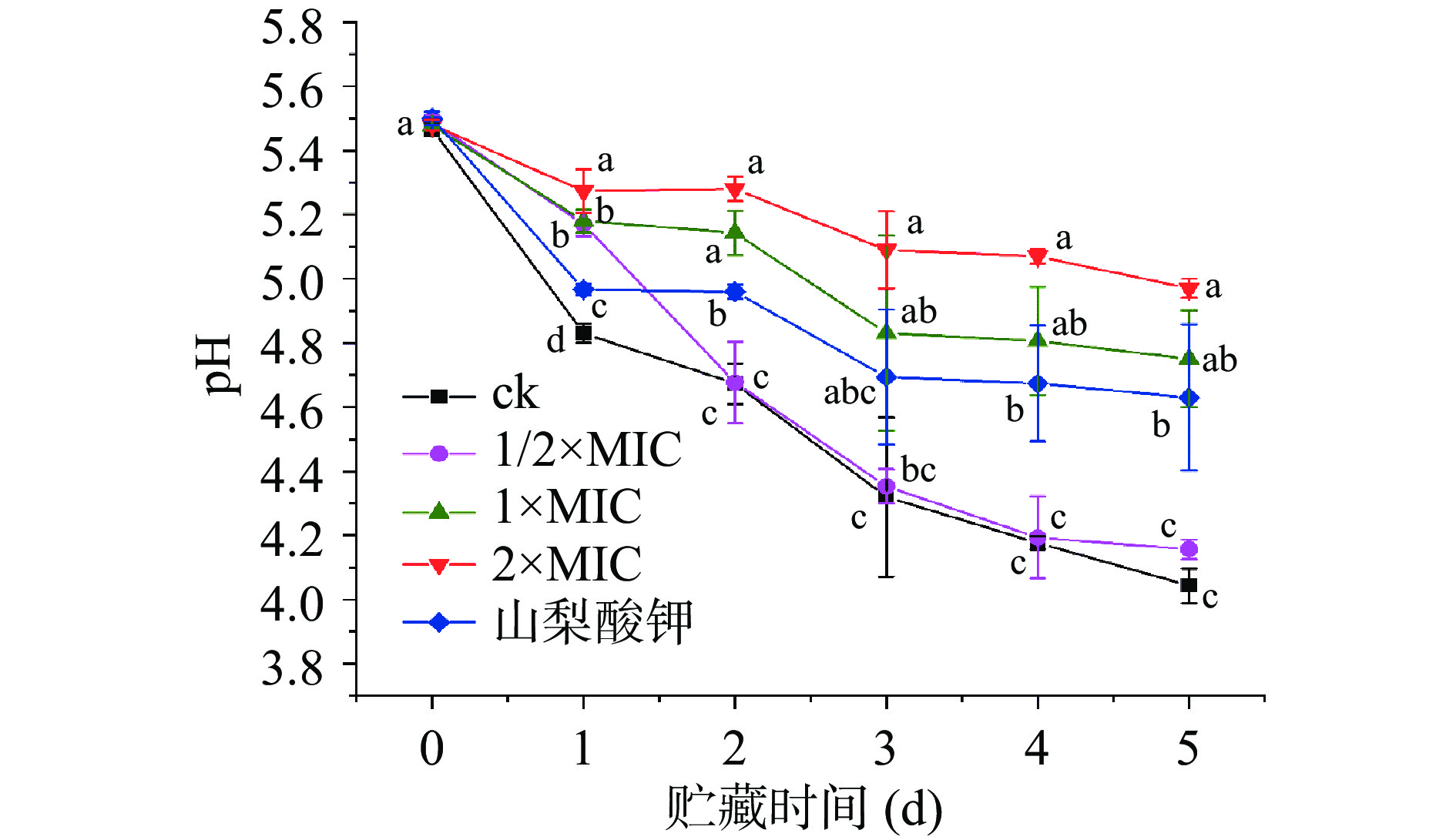
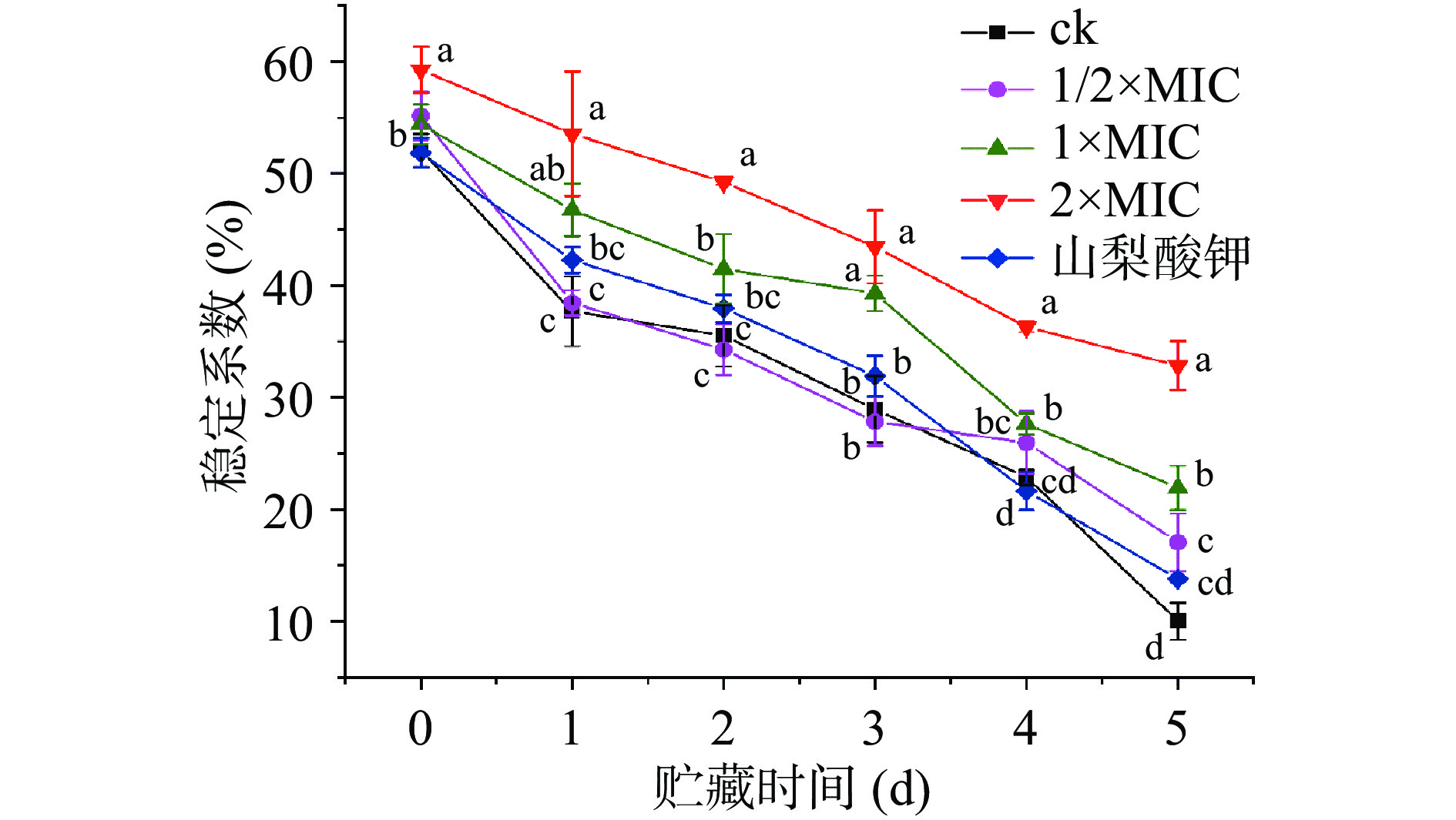

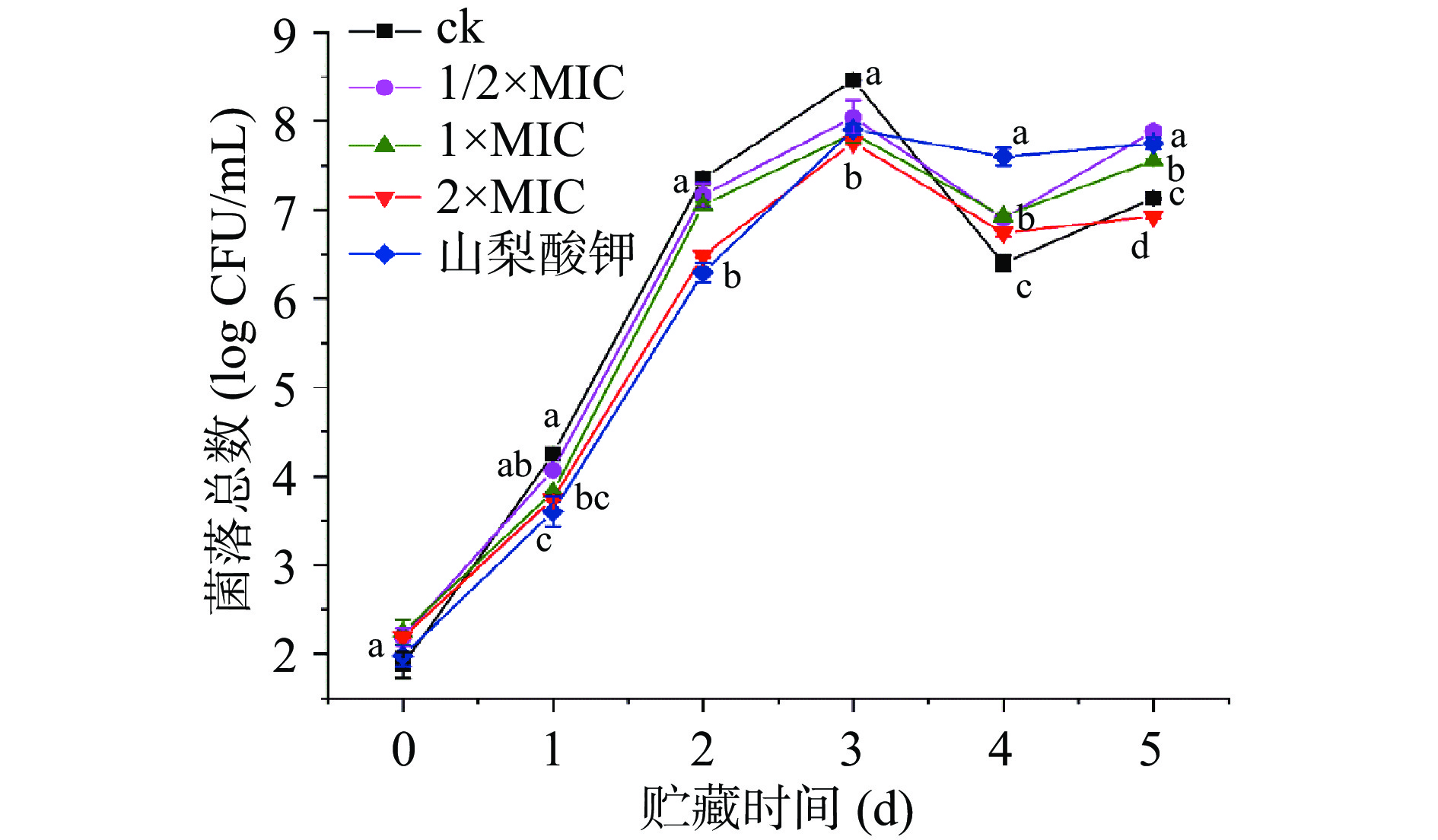
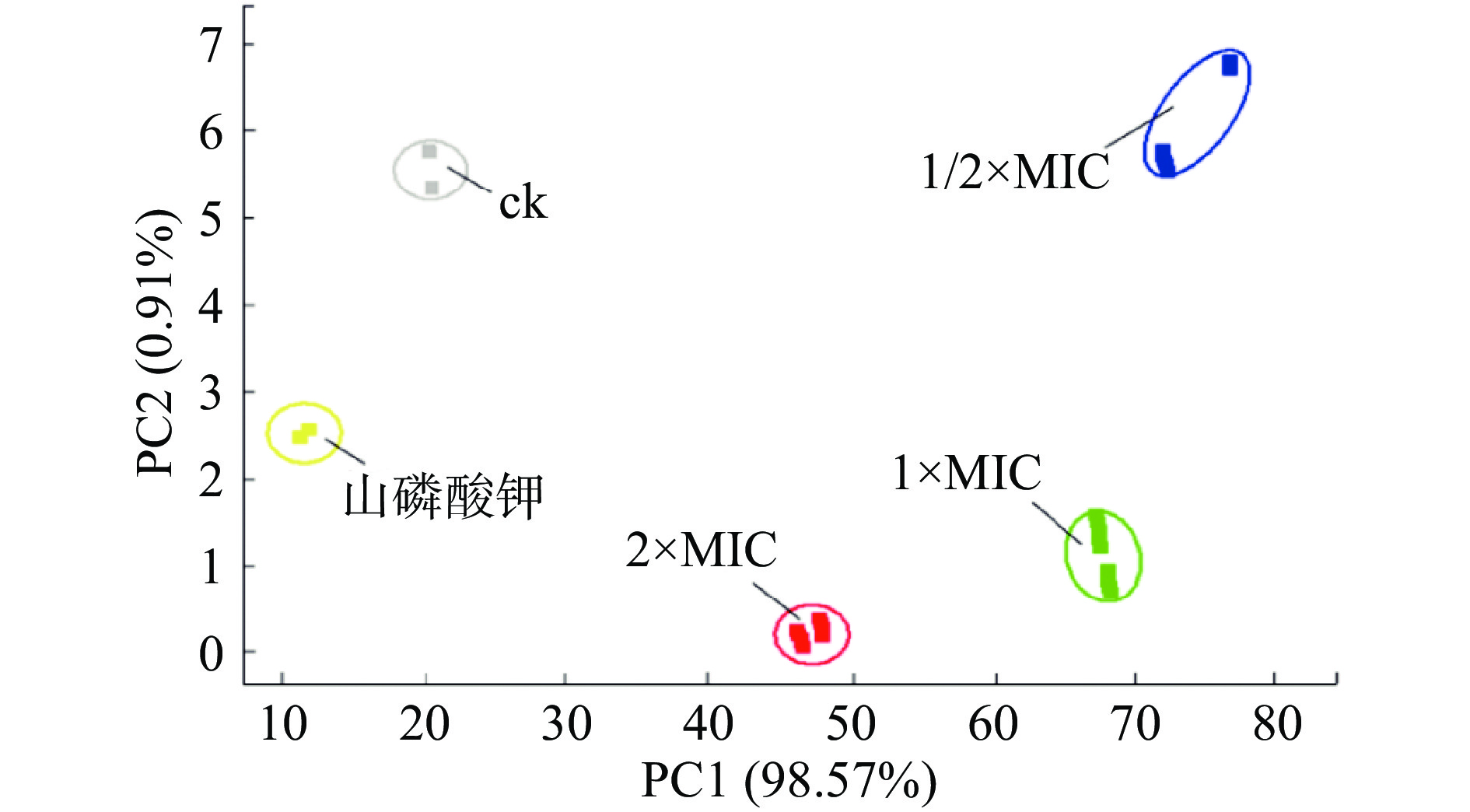
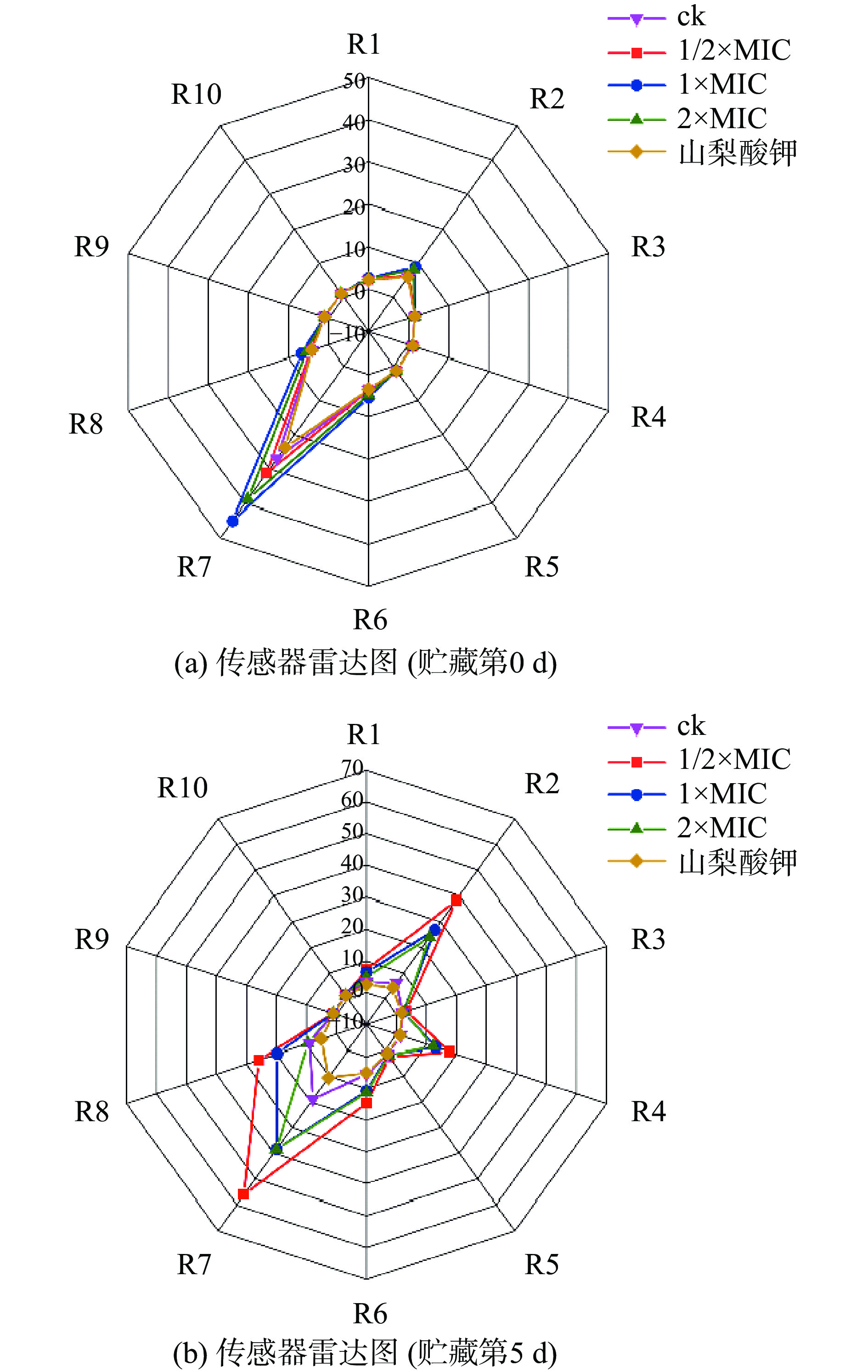
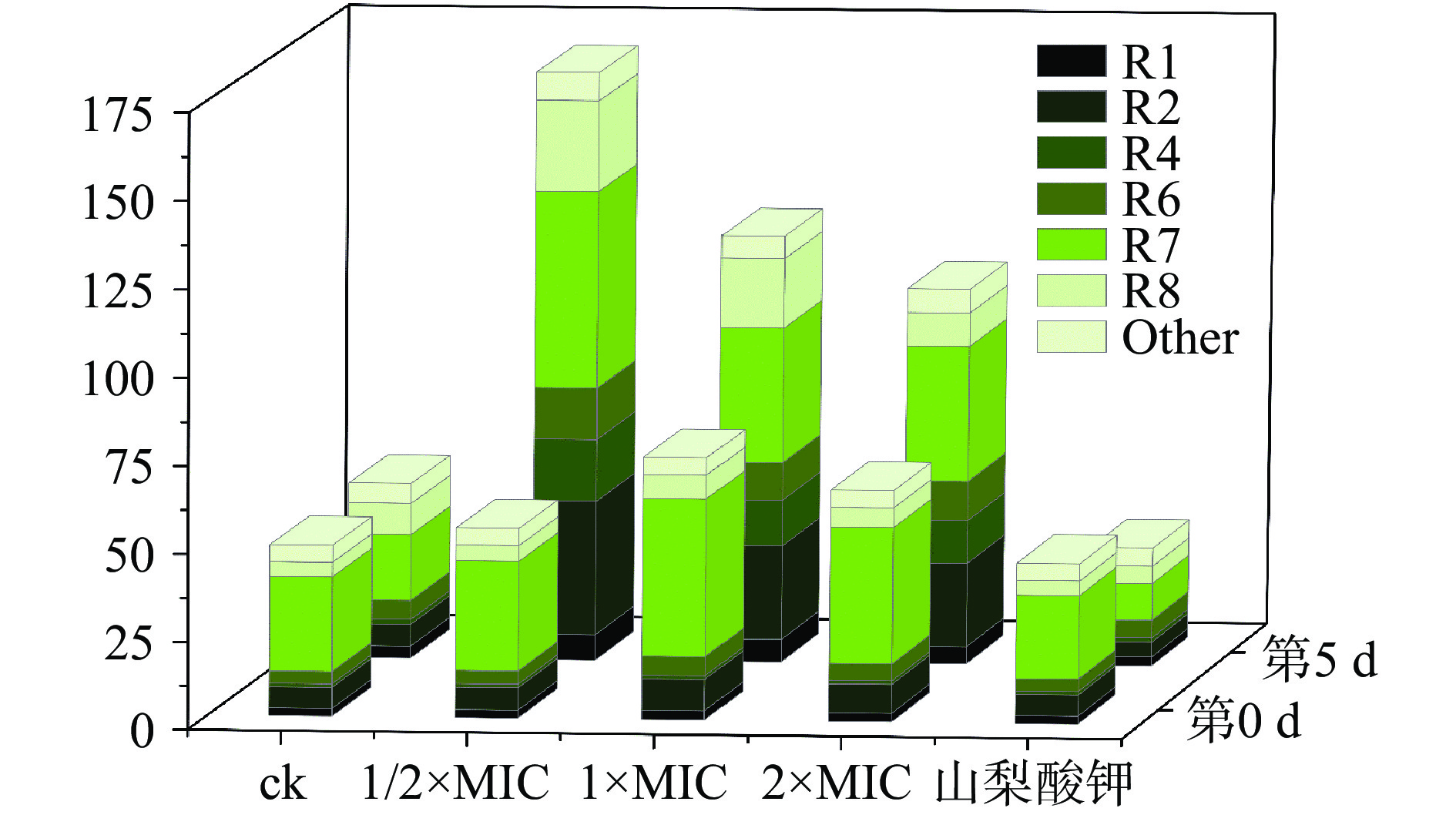
 下载:
下载:
